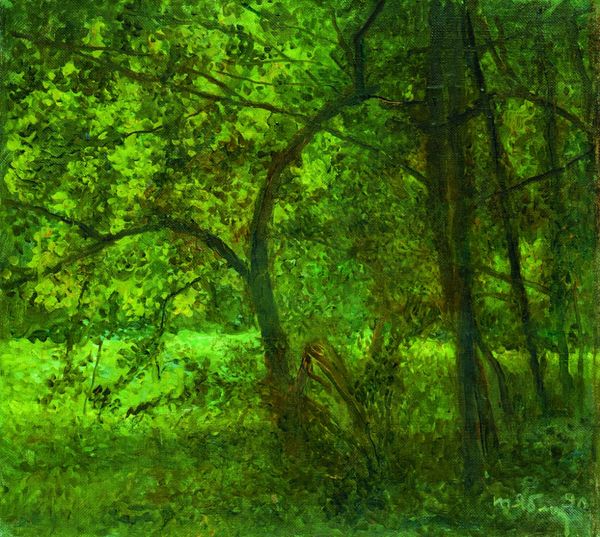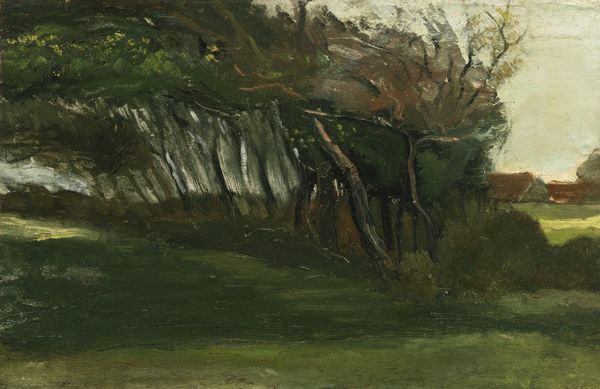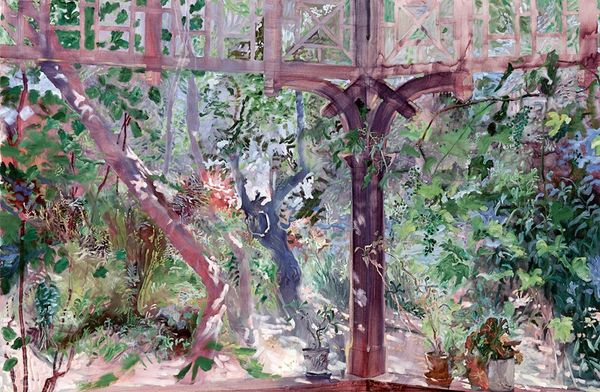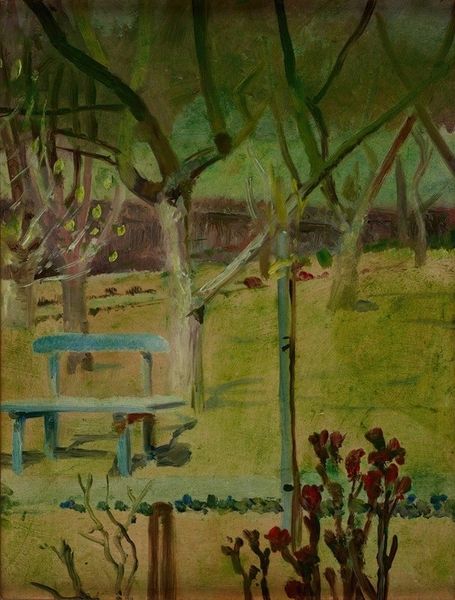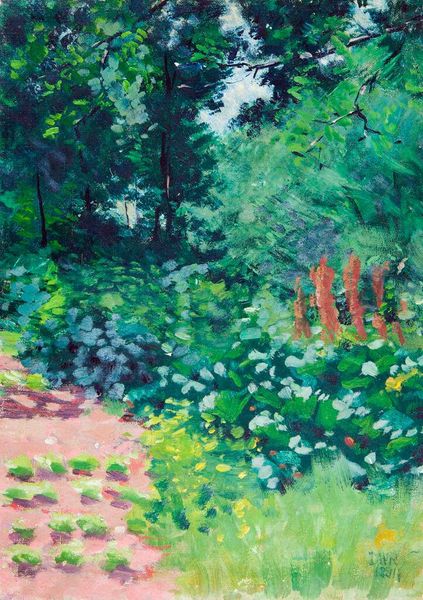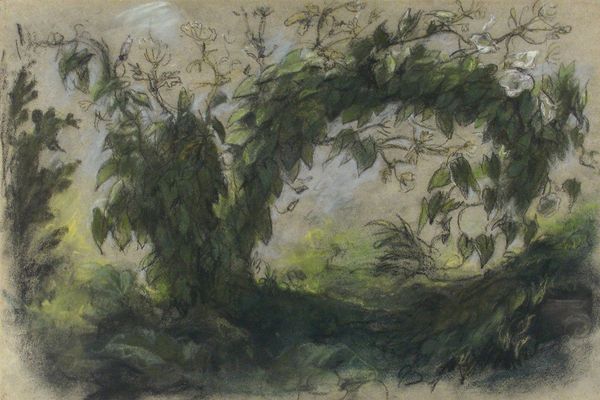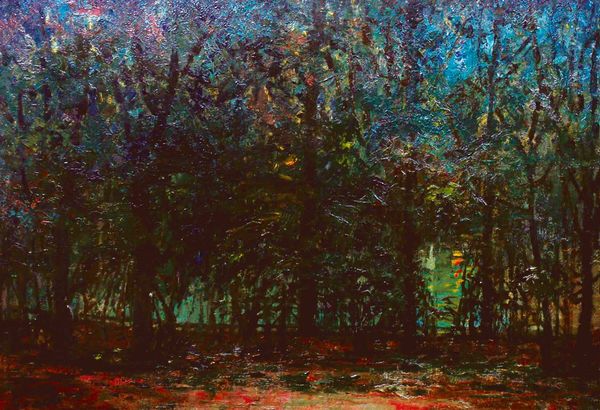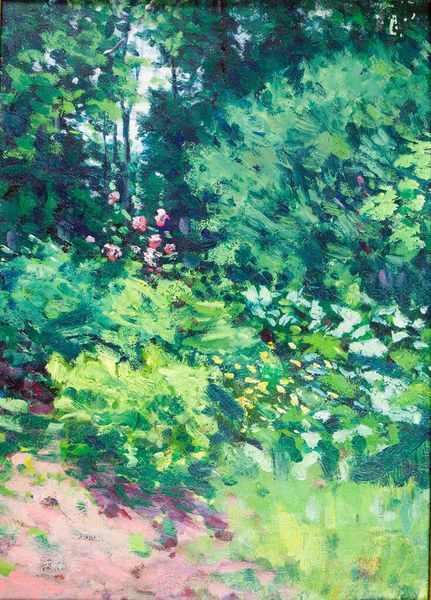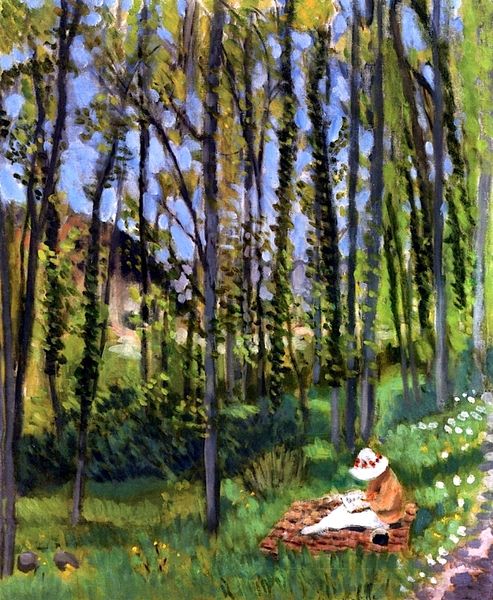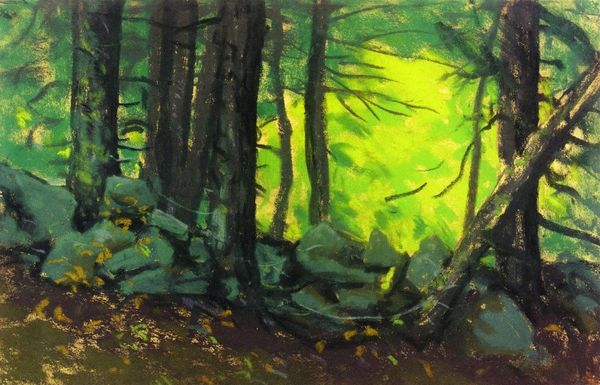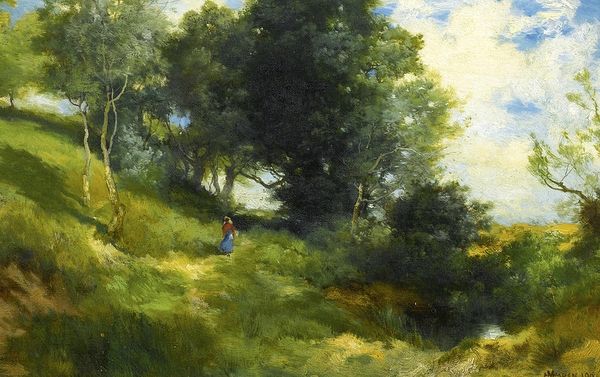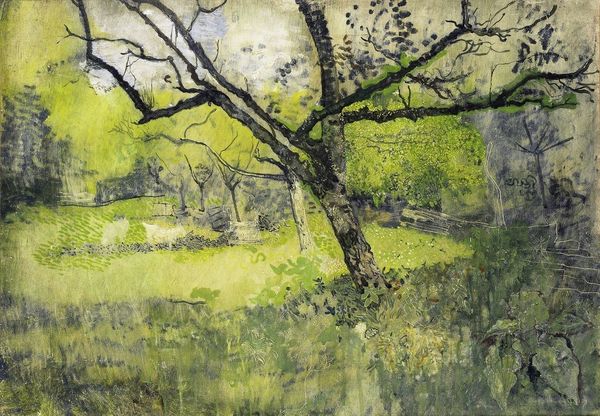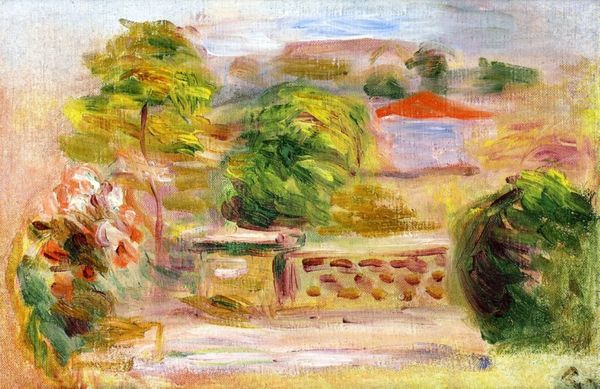
Copyright: Public domain
Curator: What an enchanting piece! We're looking at "Summerhouse" painted by Konstantin Egorovich Makovsky in 1889. He rendered this piece in oil paint, and it truly captures the essence of late 19th-century Russian Romanticism. Editor: My first thought is: mystery. The overgrown greenery feels secretive, as if nature itself is reclaiming this man-made structure. The light is so dappled; it gives the whole scene a dreamlike quality. Curator: Exactly! This captures the Romantic sensibility, blurring the boundaries between nature and architecture, showcasing nature's power over formal constructs. Makovsky emerged as a prominent artist deeply involved in the evolving artistic landscape of Russia, especially during its embrace of landscape and genre painting. How might this interest influence Makovsky? Editor: The latticework immediately makes me think of confinement, but then the abundance of foliage, with all its implied life and growth, feels like liberation. The visual symbolism really speaks to this tension of restriction and freedom, so there is a dichotomy. Do you see this dichotomy influencing the artwork's visual? Curator: I absolutely agree! Genre paintings such as this are frequently influenced by societal norms and artistic expression of the day. It would also echo a prevalent trope within Russian art during that time – a yearning for something beyond the strict social structures. Makovsky had a specific view of society through his history. Editor: I’m drawn to how the plants seem to intentionally obscure the summerhouse's interior, like visual metaphors guarding some untold story. Does the artwork draw ideas from Russian cultural history? It almost resembles the entrance to an otherworld, like in a folktale. Curator: The prevalence of nature motifs definitely connects it to broader cultural mythologies. However, what makes "Summerhouse" unique is its engagement with then contemporary trends. I mean genre painting gained popularity when there were discussions surrounding national identity, cultural heritage, and socio-political commentaries within Russian society. Editor: Seeing it through that lens really enriches the experience. It’s not just a pretty scene; it's a statement about the Russian soul yearning for freedom from those formal restraints, expressed through recognizable visual markers. Curator: It’s fascinating to consider how this canvas represents a pivotal point, not only for Makovsky, but in the narrative of Russia’s art history, demonstrating cultural dynamics through something as simple as an abandoned summerhouse. Editor: This has been an exciting exploration into both the literal image and its complex symbolic weight, seeing how they work together is really striking.
Comments
No comments
Be the first to comment and join the conversation on the ultimate creative platform.
